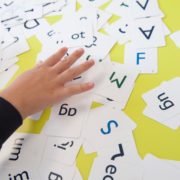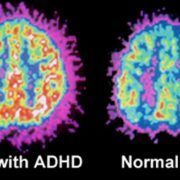How Biofeedback Can Help Treat ADHD
How Biofeedback Can Help Treat ADHD
How Biofeedback Can Help Treat ADHD
What is Biofeedback?
Biofeedback is a treatment that helps patients learn to control bodily processes such as muscle tension, blood pressure, or heart rate. It has been used to treat problems like high blood pressure, muscle tension and anxiety.
The way a Biofeedback session works is the therapist attaches electrodes to the patient’s skin, and these send information to a monitoring box. The therapist views the measurements on the monitor, and, through trial and error, identifies a range of mental activities and relaxation techniques that can help regulate the patient’s bodily processes.
How can it be used to treat ADHD?
When used for ADHD, a device reads a child’s brain wave activity and sends feedback via a game-like challenge. Some claim this process can train the brain to behave differently and reduce ADHD symptoms. Neurofeedback is a form of biofeedback that is mainly used to help treat children who have ADHD.
Biofeedback is also an excellent tool for helping individuals manage their stress and anxiety. The challenges that often accompany ADHD can often bring increased stress to both the individual with ADHD and their family. With biofeedback the individual can actually ‘see’ their level of stress or arousal and using the expert guidance of the therapist learn the most effective strategy to lower this stress/arousal in the body.
Here at Pathways we specialize in helping diagnose, treat, and create a comprehensive plan to help deal with ADHD and other related issues. Join our mailing list and you will receive free mp3’s with relaxation strategies so you can start practicing your stress management and incorporate relaxation training into your life now!
.cc-input-type-hidden, .has_errors .cc_intro { display:none } html body #cc_form_1 .cc_success { margin:0!important; padding:10px; color: #ffffff!important; } html body #cc_form_1 { line-height: 1; } html body #cc_form_1 ol, html body #cc_form_1 ul { list-style: none; margin:0; padding:0; } html body #cc_form_1 li { list-style: none; } html body #cc_form_1 blockquote, html body #cc_form_1 q { quotes: none; } html body #cc_form_1 blockquote:before, html body #cc_form_1 blockquote:after, html body #cc_form_1 q:before, html body #cc_form_1 q:after { content: ”; content: none; } html body #cc_form_1 :focus { outline: 0; } html body #cc_form_1 .req { cursor: help; } html body #cc_form_1 { background: none transparent; padding: 15px; margin-bottom: 1em; margin-top: 1em; margin-left: auto; margin-right: auto; -webkit-background-clip: border-box; -moz-background-clip: border-box; background-clip:border-box; background-origin: border-box; -webkit-background-origin: border-box; -moz-background-origin: border-box; border: solid #f4f4f4 1px; -moz-border-radius: 0px 0px; -webkit-border-radius: 0px 0px; border-radius: 0px 0px 0px 0px; width: 100%; max-width: 100%; color: #ffffff!important; font-family: inherit!important; font-size: !important; text-align: left!important; } html body #cc_form_1 * { font-size: ; } html body #cc_form_1 select { max-width: 100%; } .kws_input_fields { text-align: left; } html body #cc_form_1 li { margin:.5em 0; } html body #cc_form_1 ul label { margin: 0; padding:0; line-height:1; cursor: pointer; } html body #cc_form_1 input.t { margin: 0; padding:.3em; line-height:1.1; -moz-border-radius: 2px 2px; -webkit-border-radius: 2px 2px; border-radius: 2px 2px 2px 2px; font-family: inherit; max-width: 95%; } html body #cc_form_1 ::-webkit-input-placeholder { color: #bbb; } html body #cc_form_1 :-moz-placeholder { color: #bbb; } html body #cc_form_1 ::-moz-placeholder { color: #bbb; } html body #cc_form_1 :-ms-input-placeholder { color: #bbb; } html body #cc_form_1 .cc_intro, html body #cc_form_1 .cc_intro * { font-family: inherit; margin:0; padding:0; line-height:1; color: #ffffff; } html body #cc_form_1 .cc_intro * { padding: .5em 0; margin: 0; } html body #cc_form_1 .cc_intro { padding-bottom:0.25em; } html body #cc_form_1 .kws_input_container { padding-top: .75em; } html body #cc_form_1 label { margin-bottom:0.25em; text-align: ; color: #ffffff; font-size: 12px!important; font-family: inherit; display:block; } html body #cc_form_1 .cc_lists li { text-indent: -1.25em; padding-left: 1.4em; } html body #cc_form_1 .submit { display:block; padding-top: .75px; clear:both; float:left; } html body #cc_form_1 label.kws_bold { font-weight:bold; } label.kws_bold input { font-weight:normal; } html body #cc_form_1 label.kws_italic { font-style:italic; } label.kws_italic input { text-style:normal; } .kws_clear { clear:both; }
Dr. Gordon is an experienced ADHD expert. He is devoted to helping you learn more about ADHD and find solutions for each individual’s needs. Please feel free to contact us for any concerns or questions regarding ADHD about yourself, or a loved one.
The Pathways team of professionals has helped thousands of people with ADHD. We are Dedicated to effective and compassionate care for individuals with neurological challenges.
The post How Biofeedback Can Help Treat ADHD appeared first on Pathways Neuropsychology Associates.
Source: Pathways Neuropsychology
How Biofeedback Can Help Treat ADHD











Leave a Reply
Want to join the discussion?Feel free to contribute!